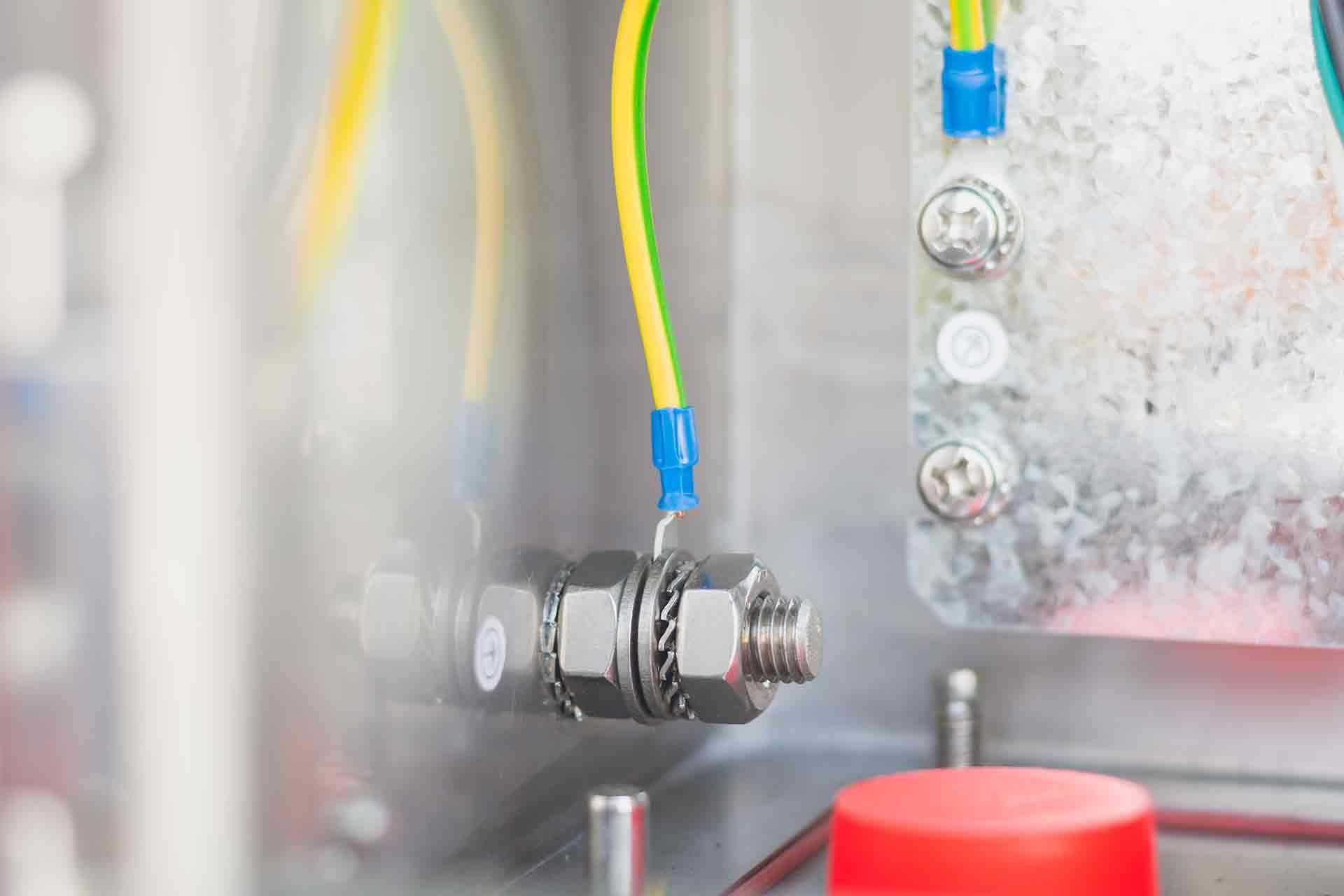In the intricate realm of electrical systems, two crucial concepts—earthing and bonding—stand as guardians of safety in our homes. This article embarks on a journey to demystify these fundamental elements, shedding light on their individual roles, the distinctions between them, and their collective contribution to creating a secure electrical environment for homeowners.
Understanding EarthingDefinition
Earthing, or grounding, is a foundational safety measure in electrical systems. It involves creating a direct, low-resistance path for fault currents to flow into the ground, preventing the buildup of dangerous voltages in the electrical installation.
Beyond safety considerations, grounding contributes to the overall stability and reliability of electrical systems, ensuring they function efficiently and minimising the risk of electrical hazards and equipment failures.
Purpose
The primary purpose of earthing is to safeguard against electrical faults. By providing a defined path for fault currents, earthing makes sure that excess electricity dissipates harmlessly into the ground rather than posing risks within the electrical system.
For delicate electronic devices, stability is especially important because voltage variations can cause malfunctions and decreased functionality.
Furthermore, by enabling circuit breakers and other protective devices to respond to faults promptly, proper earthing enhances their effectiveness. All things considered, earthing improves the overall performance and dependability of the electrical infrastructure in addition to providing safety.
Earthing Systems
Various earthing systems exist, each with specific applications. The TN-S system features separate conductors for the line, neutral, and earth, while the TN-C-S system combines the neutral and earth conductors. The TT system relies on locally fitted earth electrodes, offering a diverse range of options to suit different scenarios.
The Role of BondingDefinition
Bonding involves connecting all conductive parts of an electrical installation to prevent potential differences. This guarantees that all exposed conductive surfaces remain at the same electrical potential, reducing the risk of electric shock.
Purpose
While earthing deals with fault currents, bonding addresses the potential for differences in electrical potential. By creating equipotential bonding, bonding conductors minimise the risk of electric shock by equalising the electrical potential across various conductive parts.
Equipotential Bonding
Equipotential bonding focuses on connecting extraneous-conductive parts to maintain uniform electrical potential. This includes connecting metal pipes, gas lines, and other conductive elements to prevent disparities that could lead to electric shocks.
Key Differences Between Earthing and BondingFunctionality
Earthing primarily deals with fault currents, providing a safe path for their dissipation. Bonding, on the other hand, focuses on equalising electrical potential among conductive parts to prevent shocks.
Components Involved
Earthing involves a dedicated earthing conductor, often connected to an earth electrode. Bonding utilises a bonding conductor to interconnect conductive parts, ensuring they share the same electrical potential.
Safety Implications
Improper earthing can result in hazardous fault currents, while inadequate bonding may lead to potential differences between conductive parts, posing a risk of electric shock. Understanding these implications is crucial for a comprehensive safety approach.
Earthing and Bonding in Electrical InstallationsEarthing Conductor
The earthing conductor forms a critical part of the earthing system, providing a direct path for fault currents. Its proper connection to the main earthing terminal ensures effective dissipation.
Bonding Conductor
Bonding conductors link various conductive parts, creating a network that prevents potential differences. These conductors contribute to the overall safety of the electrical installation.
Main Earth Terminal (MET)
The MET serves as the central hub where earthing and bonding conductors converge. It is a crucial point in ensuring a unified approach to electrical safety.
Importance of Earthing and Bonding in Home SafetyProtection Against Electric Shock
Effective earthing and bonding is paramount in protecting against electric shock. By addressing fault currents and potential differences, these measures create a safer living environment.
Preventing Fire Hazards
Proper earthing and bonding significantly reduce the risk of electrical fires. Swift dissipation of fault currents and equalisation of potential contribute to a fire-resistant electrical setup.
Compliance with Regulations
Adhering to electrical regulations isn’t just a legal requirement but a vital aspect of ensuring a safe and compliant electrical installation. Earthing and bonding play pivotal roles in meeting these standards.
Common Misconceptions About Earthing and BondingMyth-Busting
Dispelling common myths surrounding earthing and bonding is essential for promoting accurate understanding. These misconceptions often stem from oversimplified views of these complex safety measures.
Educating Homeowners
Educating homeowners about the intricacies of earthing and bonding empowers them to make informed decisions. A well-informed homeowner is better equipped to prioritise electrical safety.
Testing and Maintenance PractisesRegular Testing
Routine testing of earthing and bonding systems provides ongoing effectiveness. This proactive approach helps identify potential issues before they escalate.
Maintenance Guidelines
Guidelines for maintaining earthing and bonding components involve visual inspections and professional assessments. These practices contribute to the longevity and reliability of safety measures.
Professional Inspections
Periodic professional inspections offer a comprehensive evaluation of earthing and bonding systems. Professionals such as a licensed electrician can identify and address potential issues, guaranteeing the continued safety of the electrical installation.
Future Trends and InnovationsSmart Earthing and Bonding Systems
Emerging technologies introduce smart features to earthing and bonding systems. These innovations offer remote monitoring, timely alerts, and enhanced control, adding an intelligent layer to electrical safety.
Integration with Home Automation
The integration of earthing and bonding systems into home automation setups enhances overall control and monitoring. This seamless integration aligns with the growing trend of smart homes.
Enhanced Safety Features
Ongoing innovations focus on enhancing safety features within earthing and bonding systems. Improved insulation, advanced circuitry, and additional safety layers contribute to a more robust safety framework.
Conclusion
In the intricate dance of electrons powering our homes, earthing and bonding emerge as unsung heroes, making sure our safety is in the background. Understanding their distinct roles, addressing common misconceptions, and embracing future innovations are key to fostering a secure electrical environment.
As homeowners, let’s prioritise the health and efficacy of our earthing and bonding systems, for they are the silent guardians that make our homes not just powered but safe-havens. Stay tuned for more insights into the dynamic world of electrical safety, where knowledge is the linchpin of a brighter and safer home.





